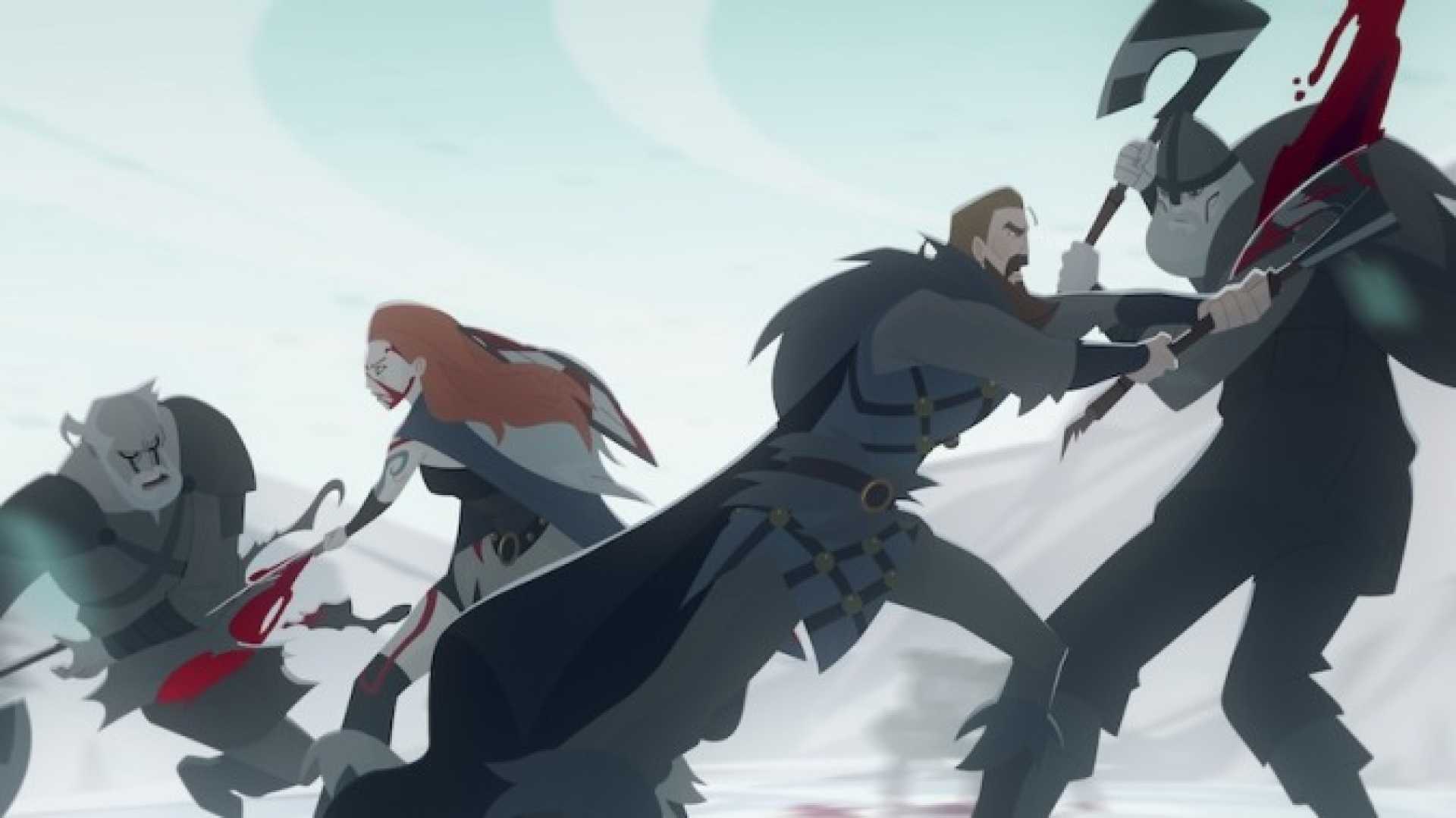Entertainment
An In-Depth Look at Netflix’s “Twilight of the Gods”

“Twilight of the Gods,” co-created by Zack Snyder, Jay Oliva, and Eric Carrasco, is a new animated series that brings to life the legends of Norse mythology with vivid animation and a spirited narrative. The series, available on Netflix, presents a world where gods, giants, and humans clash amidst a backdrop of stunning landscapes and intense battles.
Sigrid, voiced by Sylvia Hoeks, stands at the center of this tale. A formidable warrior, she once saved the life of King Leif, played by Stuart Martin. Their bond, forged in battle, sparks a love story at the heart of the series. However, this romance is cut short when Thor, portrayed by Pilou Asbæk, disrupts their wedding with catastrophic violence. This event sets Sigrid on a path of vengeance as she vows to kill the god himself.
The series is composed of eight episodes, each less than 30 minutes long. It traces Sigrid’s adventure alongside a band of misfits, including Egill, the spellcaster played by Rahul Kohli, and Andvari, the dwarf smith brought to life by Kristofer Hivju. Together, they navigate through the realms, from underworld rivers to the halls of gods, facing armies of the dead and mythical creatures.
Despite its engaging visuals and action-packed sequences, “Twilight of the Gods” struggles to develop its characters fully. The plot’s brisk pace often glosses over deeper emotional connections, leaving some of the more intimate storylines underexplored. Moments that would benefit from emotional depth are sometimes relegated to quick dialogues where character motivations are explained rather than shown.
The show excels in its portrayal of epic battles and the use of Norse mythological elements. However, the series’ exploration of sensual themes sometimes feels contrived or gratuitous, detracting from the overall narrative. Nonetheless, “Twilight of the Gods” succeeds in delivering a visual spectacle with its powerful animation and poetic language, capturing the essence of its mythological roots.
As the series progresses, themes of resistance, oppression, and personal demons are woven into the characters’ narratives, providing a timeless quality to their struggles. Such elements hint at the enduring nature of these myths and their relevance to contemporary audiences.












